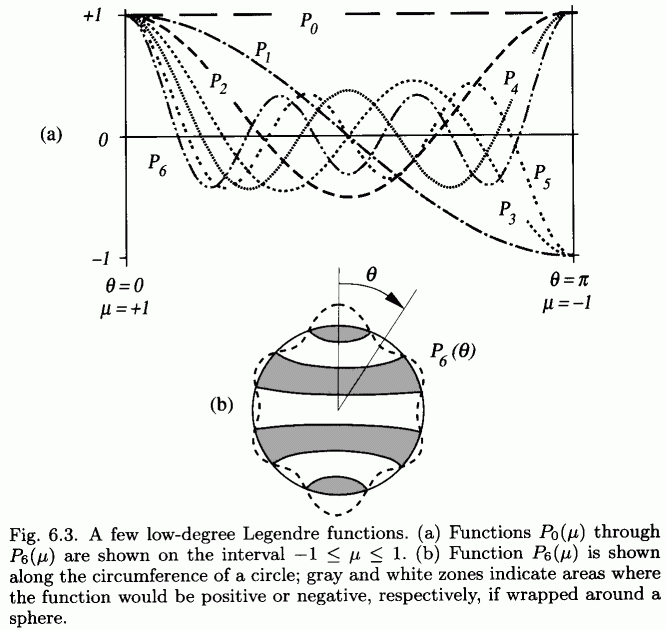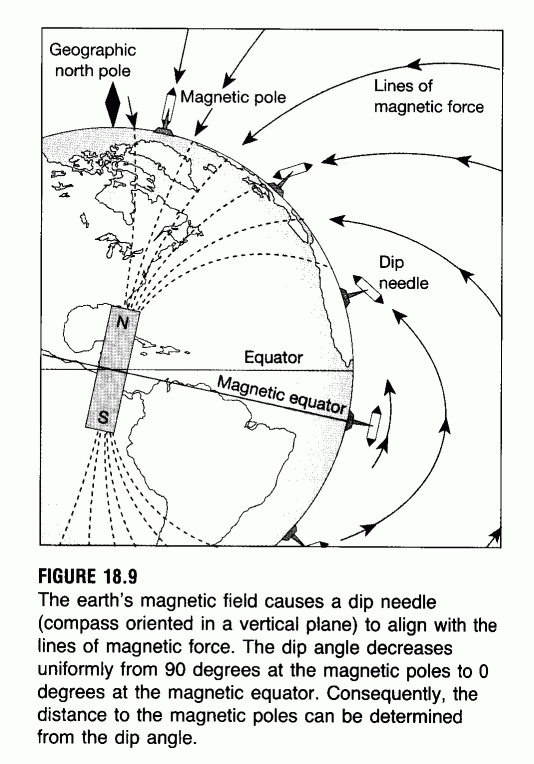Earth's Magnetic Field
The Dynamo Effect
The simple question "how does the Earth get its magnetic field?"
does not
have a simple answer. It does seem clear that the generation of the
magnetic field is linked to the rotation of the earth, since Venus with
a similar iron-core composition but a 243 Earth-day rotation period
does not have a measurable magnetic field. It certainly seems plausible
that it depends upon the rotation of the fluid metallic iron which
makes up a large portion of the interior, and the rotating conductor
model leads to the term "dynamo effect" or "geodynamo", evoking the
image of an electric generator.
Convection
drives the outer-core fluid and it circulates relative to the earth.
This means the electrically conducting material moves relative to the
earth's magnetic field.
If it can obtain a charge by some interaction like friction between
layers, an effective current loop could be produced. The magnetic field
of a current loop
could sustain the magnetic dipole type magnetic field of the earth.
Large-scale computer models are approaching a realistic simulation of
such a geodynamo.
- 1838, Carl Friedrich Gauss proved 95% of
Earth's magnetic field is internal, 5% external
- Earth's field is sum of 3 parts:
- Main magnetic field
- produced by electrical currents in
outer core
- steady on time scale of days, but
variable over years
- approximately 50,000 nT (0.5 Oe)
- accounts for large regional variations
in intensity and direction
- External magnetic field
- produced by electrical currents in
ionosphere consisting of particles ionized by solar radiation
- usually variable over hours, at tens
of nT
- occasionally variable over minutes, at
hundreds of nT (magnetic storm)
- Anomalous, induced magnetic field
- magnetization induced in crust by Main
Field (and External Field) or remanent magnetization ("permanently
induced")
- limited to upper crust (Curie T)
- limited to ferr(-o, -i)magnetic
materials
Spherical Harmonic Analysis of Earth's Field
- if Earth's field were dipolar and aligned with
geographic north (i.e., with coordinate system for spherical harmonic
analysis), then g10 would
be only non-zero term
- if dipolar, but tilted, g10,
g11, h11 would
be only non-zero terms

International Geomagnetic Reference Field (IGRF)
- often subtract Earth's main field from
magnetic data:
- removes regional field
- removes secular variation in main field,
important when combining data acquired years apart
- field evaluated every 5 years; coefficients of
field, and secular variation in field, published
- example: to find field in June, 2003 (2003.5),
extrapolate by using IGRF2000 values for 2000.0 plus secular terms for
2000.0 times 3.5; to find field in 1994, interpolate between 1990.0 and
1995.0 coefficients
Main Magnetic Field
- can be thought of as consisting of dipolar and
non-dipolar components
Dipole Field
- best-fit (tilted) dipole field, at r = a
(radius of Earth)
- N pole presently at 79 deg N, 70 deg W
- S pole presently at 79 deg S, 110 deg E
Dip poles
- based on Earth's actual, total field, dip
poles are where inclination = 90 deg
- magnetic equator is 0 deg inclination contour
line
- "current" dip poles:


Non-Dipole Field
- total field - dipole field
- shows four major anomalies (quadrupolar)
- can be constructed from spherical harmonic
coefficients
Secular Variation
- data go back to at least 1500s (London
Observatory)
- change about 50 - 150 nT/year most places
mostly related to non-dipole field
- non-dipole field changing also; decreasing
1/2000 per year
- westward drift: about 0.2 deg longitude
per year
- produces decreases and increases at some
localities
- indicates that core rotating more slowly
than mantle/crust
External Field
- about 1% of total field
- diurnal variation
- tens of nT
- strongest at equator
- seasonal: diurnal variation greatest in
summer
- all suggest role of sun
- EM (UV and x-rays) ionizes particles
in ionosphere
- Sun's tidal force produces cyclic wind
currents in ionosphere, which in turn produces electrical currents
- ionosphere directly produces 2/3 of
observed diurnal effect; induced currents in Earth contribute about 1/3
- magnetic storms
- from 100s to 1000s of nT
- last hours to days
- caused by sunspot activity
- 27 day cycles (sunspots rotate with Sun)
- fixed-station recording magnetometers
provide data on field variability (e.g., Alaska)
Field Elements

Magnetic Reversals
CNN Article on Reversals (4/7/04)
Illustrations of Earth's Magnetic Field
Magnetic field of Earth based on IGRF 1990
(Blakely):
- (a) Isodynamic
map showing total intensity, contour interval 2,500 nT
- (b) Isoclinic
map showing constant inclination, contour interval 10o
- (c) Isogonic
map showing constant declination, contour interval 10o
Present-day total magnetic field
- total
field
- declination
- inclination
Non-dipole field
Secular variation
in
vertical field
Magnetic
field
power spectrum
Field
values based on 2000 IGRF




